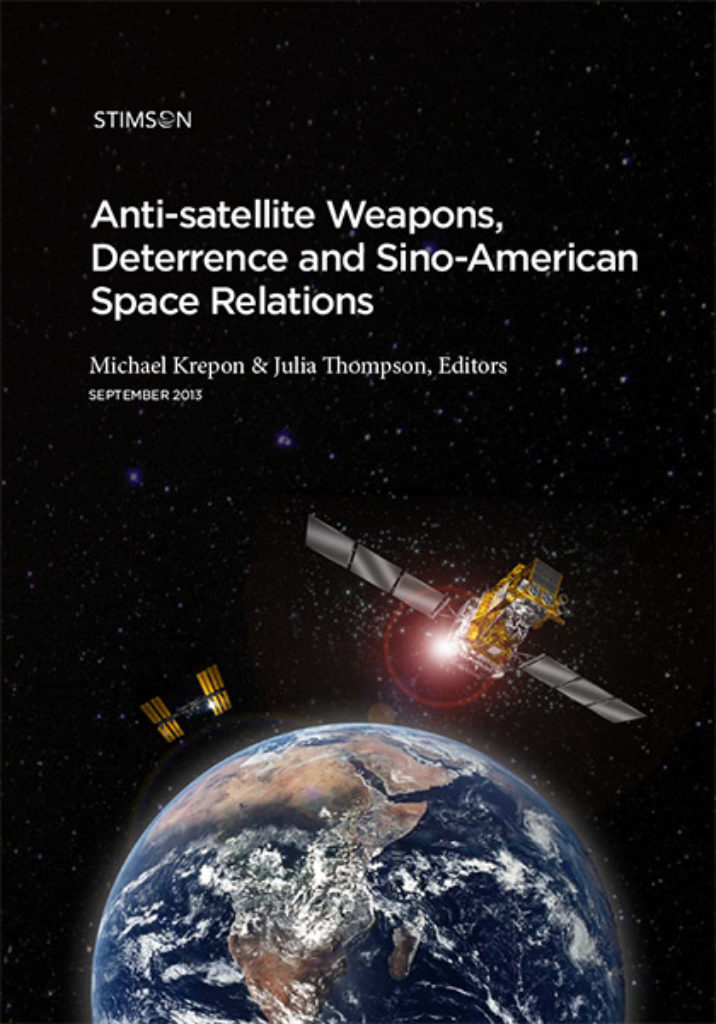The Stimson Center today issued a collection of six essays titled “Anti-satellite Weapons, Deterrence and Sino-American Space Relations,” which provide a range of viewpoints about cooperation between the U.S. and China in space.
To download the full report, click here.
“Some of the essays, mine included, are cautiously optimistic,” said Stimson Co-founder and Space Security Project Director Michael Krepon, who edited the essays with Research Associate Julia Thompson and wrote an essay titled “Space and Nuclear Deterrence.”
“Other essays are not optimistic about how this will turn out,” Krepon added. “The essays reflect pretty accurately the lack of a U.S. consensus on this set of issues. This is perfectly appropriate, given how early we are in the U.S.-China space competition and how opaque China is about its activities in space.”
“As these essays demonstrate, there are no simple answers to avoiding a dangerous military competition in space,” Krepon said. “But all of the authors agree that it would be prudent for major powers to agree on a code of conduct that establishes rules of responsible behavior in space.”
Stimson first began to advance the concept of a code of conduct for responsible spacefaring nations in 2002 and regularly hosts important conversations on space issues and challenges.
Stimson President and CEO Ellen Laipson said: “Over the past two years, Stimson programming has focused on deterring attacks on space assets, promoting greater cooperation in space between the United States and China and avoiding a dangerous military competition in space. This collection of essays captures important insights from Stimson workshops, roundtables and public events.”
Stimson Chairman Lincoln P. Bloomfield, Jr. writes in an introduction to the volume of essays about the dangers of moving warfare into space, with nations targeting the satellites of adversaries for destruction.
“Unchecked, hostile action in space could produce debris, orbiting the earth at nine times the speed of a bullet, so prevalent as to put at risk all sophisticated spacecraft including satellites,” Bloomfield writes. “This could place manned and unmanned space flight at unacceptable risk of mission failure due to catastrophic collision with debris.” As a result, “mankind’s access to space for exploration and pursuit of knowledge would be closed off … possibly for a very long time.”
In his essay, Krepon argues that a higher priority should be given to space diplomacy.
“China and the United States are increasing their capabilities to engage in space warfare,” Krepon writes. “Beijing has been reluctant to engage bilaterally with Washington on space diplomacy. One path forward leads to sensible rules of the road for space. Another leads to warfare in which every space-faring nation loses.”
In addition to Krepon, other authors of essays in the volume include James A. Lewis of the Center for Strategic and International Studies; Bruce W. MacDonald of the United States Institute of Peace; Karl Mueller of the RAND Corporation; Michael Nacht of the University of California, Berkeley; and Brian Weeden of the Secure World Foundation.
The publication is made possible through the support of the Defense Threat Reduction Agency and the New-Land Foundation. This material is made possible in part by support from the Project on Advanced Systems and Concepts for Countering Weapons of Mass Destruction (PASCC), Center on Contemporary Conflict, Naval Postgraduate School, under Grant No. N00244-12-1-0027 PASCC is supported by Defense Threat Reduction Agency (DTRA).

